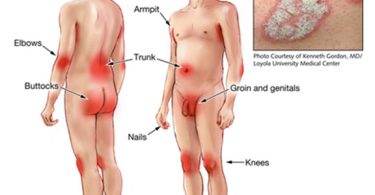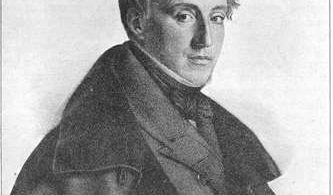
A Comprehensive Approach to Managing Fever According to the Principles of the Organon of Medicine
INTRODUCTION
Body temperature is controlled by the hypothalamus. Neurons in both the preoptic anterior hypothalamus and the posterior hypothalamus receive two kinds of signals: one from peripheral nerves that transmit information from warmth/cold receptors in the skin and the other from the temperature of the blood bathing the region. These two types of signals are integrated by the thermoregulatory center of the hypothalamus to maintain normal temperature.
DEFINITION
Fever/Pyrexia is an elevation of body temperature that exceeds the normal daily variation and occurs in conjunction with an increase in the hypothalamic set point (eg., from 37°C to 39°C). A fever of >41.5°C (>106,7°F) is called hyperpyrexia.
Although most patients with elevated body temperature have fever, there are circumstances in which elevated temperatures represent not fever but hyperthermia(heat stroke). It is characterised by an uncontrolled increase in body temperature that exceeds the body’s ability to lose heat. Unlike fever hyperthermia can be rapidly fatal and characteristically does not respond to antipyretics.1
CAUSES2
Fevers can result from various factors, including:
- infection eg. streptococcal throat, the flu, chickenpox, pneumonia, or COVID-19
- rheumatoid arthritis
- medications
- overexposing the skin to sunlight, or sunburn heatstroke
- dehydration
- silicosis(a type of lung disease caused by long-term exposure to silica dust)
- alcohol withdrawal
TYPES OF FEVER3
- Continuous fever, where temperature remains above normal and does not fluctuate more than 1 °C in 24 hours
Examples- bacterial pneumonia, typhoid, infective endocarditis, tuberculosis
- Intermittent fever is present only for a certain period, later cycling back to normal.
Examples- malaria, leishmaniasis, pyemia, sepsis,etc.
- Remittent fever, where the temperature remains above normal throughout the day and fluctuates more than 1 °C in 24 hours .
Example- infective endocarditis or brucellosis
- Pel–Ebstein fever is a cyclic fever that is rarely seen in patients with Hodgkin’s lymphoma.
- Typhoid fever is a continuous fever showing a characteristic step-ladder pattern, a step-wise increase in temperature with a high plateau, etc.
Symptoms4
Depending on what’s causing a fever, other fever signs and symptoms may include: Sweating, Chills and shivering, Headache, Muscle aches, Loss of appetite, Irritability, Dehydration, General weakness,etc.
Understanding Fever in Homeopathy:5
According to Hahnemann, fever is not merely a pathological state but rather a dynamic response of the body’s vital force to an internal imbalance. In Aphorism 69 of the “Organon,” he describes fever as a beneficial process initiated by the vital force to restore health.
Individualized Treatment: According to Hahnemann’s approach is the principle of individualization. Each person manifests fever differently, depending on factors such as constitution, susceptibility, and the underlying cause of the illness. In Aphorism 76, Hahnemann explains the importance of tailoring treatment to the uncommon, peculiar and characteristic symptoms of the patient. This approach ensures that the similimum is selected on the basis of the totality of symptoms prepared after individualization.
Avoiding Suppression: Hahnemann warns against the dangers of suppressing fever through aggressive or inappropriate treatments. In Aphorism 74, he cautions that such interventions can disrupt the body’s natural healing processes and lead to the development of chronic conditions. Instead, he advocates for gentle therapies that work in harmony with the body, allowing the fever to run its course while supporting the vital force in its efforts to restore health.
Practical Management Strategies:
In managing fever according to the principles of the “Organon of Medicine,” several practical strategies can be employed:
- Thorough Case Taking: Careful observation and evaluation of the patient’s symptoms, including the modalities of the fever (e.g., time of day, aggravating factors), help identify the most suitable remedy.
- Individualisation: Selecting a remedy that closely matches the totality of the patient’s symptoms ensures optimal treatment outcomes.
- Minimal Intervention: Avoiding unnecessary medications or interventions that could suppress the fever allows the body to mount an effective immune response.
- Supportive Measures: Providing supportive care such as adequate hydration, rest, and nutritious food helps bolster the body’s defences during fever.
- Follow-Up and Monitoring: Regular follow-up appointments enable the homoeopath to assess the patient’s progress and adjust the treatment plan as needed.
Navigating Fever with the Homoeopathic Repertory 6
HOMOEOPATHIC THERAPEUTICS
- ACONITUM NAPELLUS: It is indicated in fevers with predominant cold stage with cold sweat and icy coldness of face.Coldness and heat alternate. Evening chilliness soon after going to bed. Feels as if cold waves pass through him. Patient is thirsty and restless.Chilly if uncovered or touched. Dry heat, red face.Sweat drenching, on parts lain on; relieving all symptoms.
- ARSENICUM ALBUM: Indicated in fever such as septic fever, hay fever,intermittent fevers,typhoid with marked exhaustion.There is great mental restlessness with physical weakness. Periodicity marked with adynamia. High grade fever. Cold sweats.Great heat about 3 am.
- BAPTISIA TINCTORIA: Indicated in fevers where there is chill with rheumatic pains and soreness all over the body. Heat all over, with occasional chills. Chill about 11 am. Adynamic fevers. Typhus fever. Shipboard fever.
- BELLADONA: A high feverish state with comparative absence of toxæmia. Burning, pungent, steaming, heat. Feet icy cold. Superficial blood-vessels, distended. Perspiration dry only on the head. No thirst with fever.
- EUPATORIUM PERFOLIATUM: Indicative in dengue fevers. Perspiration relieves all symptoms except headache. Chill between 7 and 9 am, preceded by thirst with great soreness and aching of bones. Nausea, vomiting of bile at close of chill or hot stage; throbbing headache. Knows chill is coming on because he cannot drink enough.
- FERRUM PHOSPHORICUM: This Is the remedy for the first stage of all febrile disturbances and inflammations before exudation sets in; especially for catarrhal affections of the respiratory tract. Indicated in all catarrhal and inflammatory fevers; first stage. Chill daily at 1 pm.
- GELSEMIUM SEMPERVIRENS: In fever patient wants to be held because he shakes. Chilliness up and down back. Heat and sweat stages, long and exhausting. Dumb-ague, with much muscular soreness, great prostration, and violent headache. Nervous chills. Bilious remittent fever, with stupor, dizziness, faintness; thirstless, prostrated. Chill, without thirst, along spine; wave-like, extending upward from sacrum to occiput.
- NATRIUM MURIATICUM: Indicated in fever with chills between 9 and 11 am. There is violent thirst which increases with fever. Fever-blisters. Coldness of the body, and continued chilliness is marked. Hydræmia in chronic malarial states with weakness, constipation, loss of appetite, etc. Sweats on every exertion.
- PULEX IRRITANS:Patient is very impatient, cross, and irritable. Feels a glow all over, like being over steam; chilly, while sitting beside the fire.
- RHUS TOXICODENDRON: Indicated in Typhoid; tongue dry and brown; sordes; bowels loose; great restlessness. Intermittent; chill, with dry cough and restlessness. During heat, urticaria. Hydroa. Chilly, as if cold water were poured over him, followed by heat and inclination to stretch the limbs.
Conclusion:
Managing fever according to the principles of the Organon of Medicine involves a holistic and individualised approach that respects the body’s innate wisdom, the vital force. By understanding fever as a dynamic expression of the vital force and selecting remedies that resonate with the patient’s unique symptomatology, homoeopaths aim to facilitate healing while minimising the risk of suppression or recurrence. Through gentle and supportive interventions, the body’s innate healing capacity is harnessed, aligning with Hahnemann’s vision of true healing in homoeopathy.
References
- Harrison,Kasper,Fauci, Hauser, Longo,& Jameson.Harrison’s Principles of Internal Medicine (Vol. 1, 20th ed.). McGraw-Hill Education|Pg 102-103.
- Fever: What you need to know|Causes|2nd January 2024|Medical News Today. https://www.medicalnewstoday.com/articles/168266#causes
- Fever|Types|(no date)|Wikipedia. https://en.wikipedia.org/wiki/Fever
- Fever|Symptoms|7 May 2022|Mayoclinic. https://www.mayoclinic.org/diseases-conditions/fever/symptoms-causes/syc-20352759
- Hahnemann S, Organon of Medicine, 5th & 6th edition Delhi: B Jain Publishers: 2016
- Offline Radar Homoeopathic Software 3.2.17,Development Platforms:BBCR.Version 3.2;2023
- William Boericke, Boericke’s New Manual of Homoeopathic Materia Medica with Repertory,3rd revised & Augmented edition based on 9th edition, Delhi: B Jain Publishers:2019





